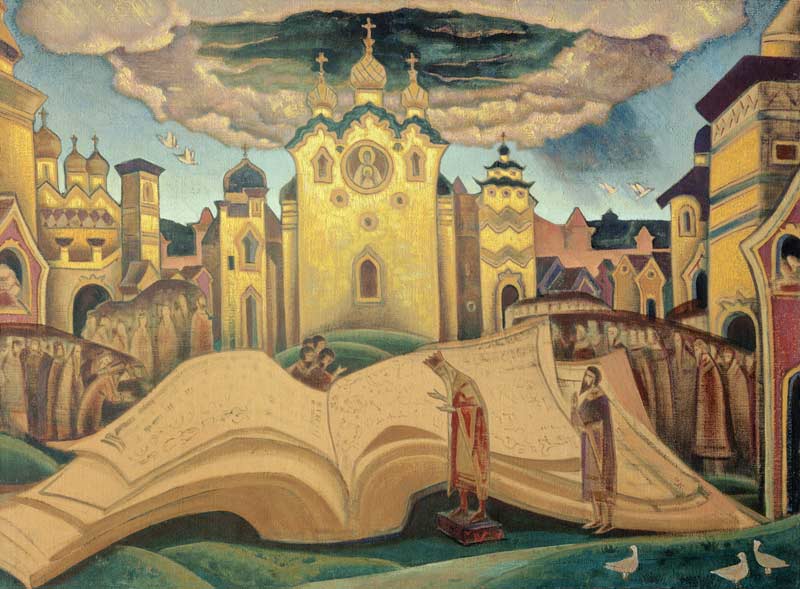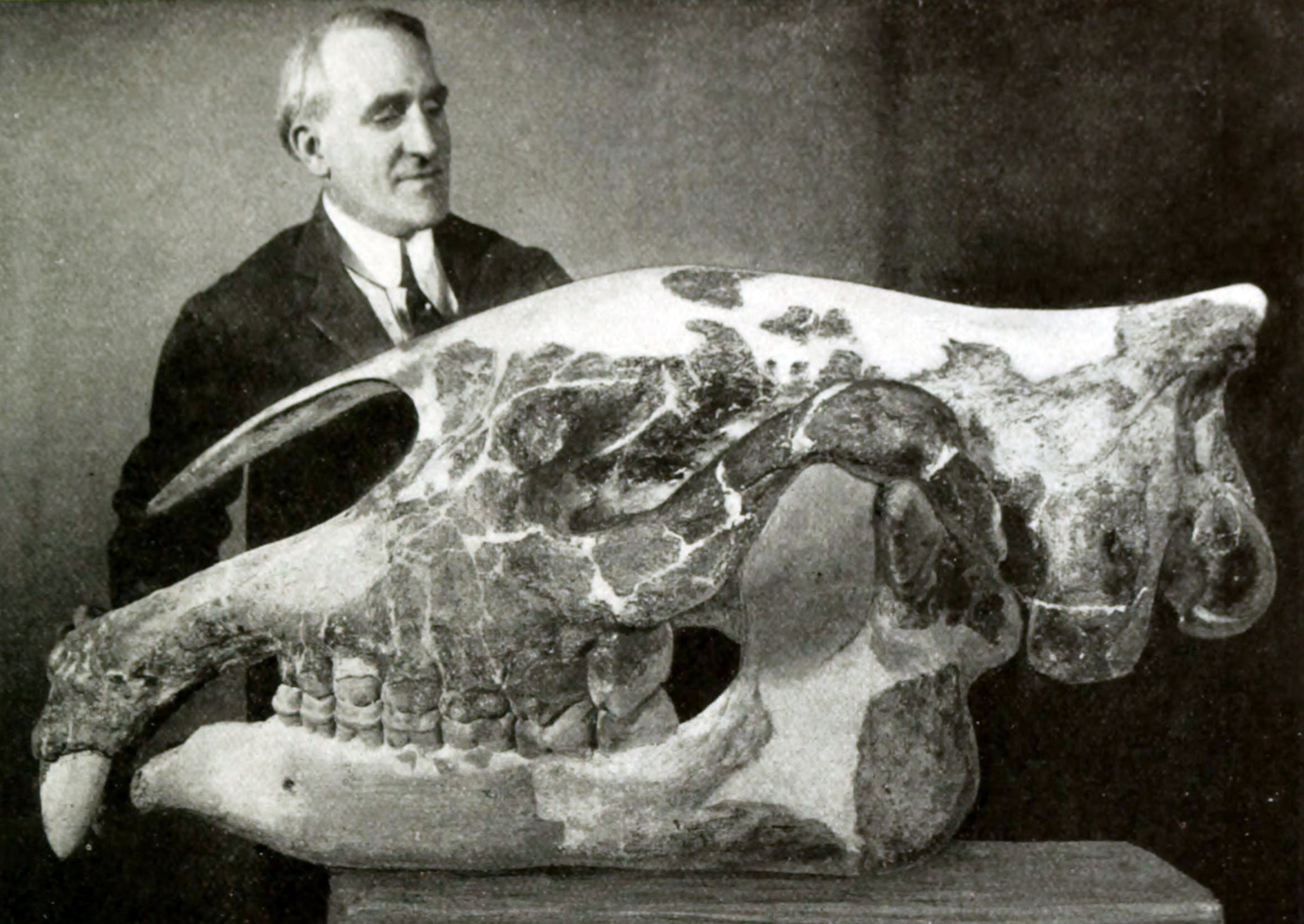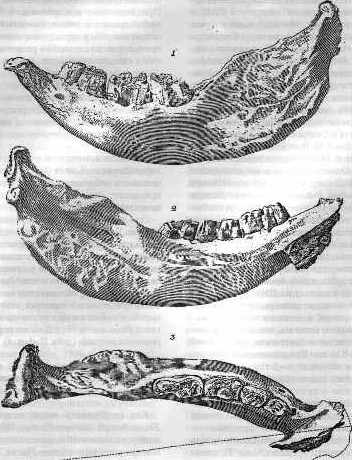|
Indrik
In the Dove Book and Russian folklore, the Indrik-Beast (Russian: Индрик-зверь, transliteration: ''Indrik zver' '') is a fabulous beast, the king of all animals, who lives on a mountain known as "The Holy Mountain" where no other foot may tread. When it stirs, the Earth trembles. The word "Indrik" is a distorted version of the Russian word ''edinorog'' (unicorn)., Vasmer's dictionary The Indrik is described as a gigantic bull with legs of a deer, the head of a horse and an enormous horn in its snout, making it vaguely similar to a rhinoceros. The Russian folkloric creature gives its name to a synonym of ''Paraceratherium'', ''Indricotherium'', the biggest land mammal ever to live. See also *Camahueto *''Elasmotherium'' *Unicorn References There are no images found Slavic legendary creatures Russian mythology Unicorns {{europe-myth-stub ... [...More Info...] [...Related Items...] OR: [Wikipedia] [Google] [Baidu] |
Russian Folklore
Folklore of Russia is folklore of Russians and other ethnic groups of Russia. Russian folklore takes its roots in the pagan beliefs of ancient Slavs and now is represented in the Russian fairy tales._Epic_Russian_ �олше́бн_...s._Epic_Russian_bylinas_are_also_an_important_part_of_Slavic_paganism.html" ;"title="bylina.html" ;"title="�олше́бн ...s. Epic Russian bylina">�олше́бн ...s. Epic Russian bylinas are also an important part of Slavic paganism">bylina.html" ;"title="�олше́бн ...s. Epic Russian bylina">�олше́бн ...s. Epic Russian bylinas are also an important part of Slavic paganism. The oldest bylinas of Kievan cycle were recorded in the Northwestern Federal District, Russian North, especially in Karelia, where most of the Finnish people, Finnish national epic Kalevala was recorded as well. In the late 19th-century Russian fairy tales began being translated into English, with ''Russian Folk Tales'' (1873) by William Ralston, and ''Tales and L ... [...More Info...] [...Related Items...] OR: [Wikipedia] [Google] [Baidu] |
Dove Book
The Verse about the Book of the Dove (Голубиная книга, ''Golubinaya Kniga'') is a medieval . At least 20 versions are known. They vary in length from 30 to over 900 lines. The poem is generally thought to have been written ca. 1500 in the Novgorod region, though Russian nationalists postulate its great antiquity. The earliest extant manuscript is dated to the 17th century. The main part of the ''Dove-Book'' is a long sequence of riddles. In a series of answers to those riddles, King David David (; , "beloved one") (traditional spelling), , ''Dāwūd''; grc-koi, Δαυΐδ, Dauíd; la, Davidus, David; gez , ዳዊት, ''Dawit''; xcl, Դաւիթ, ''Dawitʿ''; cu, Давíдъ, ''Davidŭ''; possibly meaning "beloved one". w ... explains the origin of light, sun, moon, and social classes. He also mentions a mysterious stone "clept the Alatyr". Isabel Florence Hapgood describes the content of one version in the following terms: The poem's folk cosmology ... [...More Info...] [...Related Items...] OR: [Wikipedia] [Google] [Baidu] |
Unicorn
The unicorn is a legendary creature that has been described since antiquity as a beast with a single large, pointed, spiraling horn projecting from its forehead. In European literature and art, the unicorn has for the last thousand years or so been depicted as a white horse-like or goat-like animal with a long straight horn with spiralling grooves, cloven hooves, and sometimes a goat's beard. In the Middle Ages and Renaissance, it was commonly described as an extremely wild woodland creature, a symbol of purity and grace, which could be captured only by a virgin. In encyclopedias, its horn was described as having the power to render poisoned water potable and to heal sickness. In medieval and Renaissance times, the tusk of the narwhal was sometimes sold as a unicorn horn. A bovine type of unicorn is thought by some scholars to have been depicted in seals of the Bronze Age Indus Valley civilization, the interpretation remaining controversial. An equine form of the unicorn ... [...More Info...] [...Related Items...] OR: [Wikipedia] [Google] [Baidu] |
Paraceratherium
''Paraceratherium'' is an extinct genus of hornless rhinoceros. It is one of the largest terrestrial mammals that has existed and lived from the early to late Oligocene epoch (34–23 million years ago). The first fossils were discovered in what is now Pakistan, and remains have been found across Eurasia between China and the Balkans. It is classified as a member of the family Paraceratheriidae. ''Paraceratherium'' means "near the hornless beast", in reference to ''Aceratherium'', the genus in which the type species ''P. bugtiense'' was originally placed. The exact size of ''Paraceratherium'' is unknown because of the incompleteness of the fossils. The shoulder height was about , and the length about . Its weight is estimated to have been about . The long neck supported a skull that was about long. It had large, tusk-like incisors and a nasal incision that suggests it had a prehensile upper lip or proboscis (trunk). The legs were long and pillar-like. The lifestyle of ''P ... [...More Info...] [...Related Items...] OR: [Wikipedia] [Google] [Baidu] |
Unicorn
The unicorn is a legendary creature that has been described since antiquity as a beast with a single large, pointed, spiraling horn projecting from its forehead. In European literature and art, the unicorn has for the last thousand years or so been depicted as a white horse-like or goat-like animal with a long straight horn with spiralling grooves, cloven hooves, and sometimes a goat's beard. In the Middle Ages and Renaissance, it was commonly described as an extremely wild woodland creature, a symbol of purity and grace, which could be captured only by a virgin. In encyclopedias, its horn was described as having the power to render poisoned water potable and to heal sickness. In medieval and Renaissance times, the tusk of the narwhal was sometimes sold as a unicorn horn. A bovine type of unicorn is thought by some scholars to have been depicted in seals of the Bronze Age Indus Valley civilization, the interpretation remaining controversial. An equine form of the unicorn ... [...More Info...] [...Related Items...] OR: [Wikipedia] [Google] [Baidu] |
Bull
A bull is an intact (i.e., not castrated) adult male of the species ''Bos taurus'' (cattle). More muscular and aggressive than the females of the same species (i.e., cows), bulls have long been an important symbol in many religions, including for sacrifices. These animals play a significant role in beef ranching, dairy farming, and a variety of sporting and cultural activities, including bullfighting and bull riding. Due to their temperament, handling requires precautions. Nomenclature The female counterpart to a bull is a cow, while a male of the species that has been castrated is a ''steer'', '' ox'', or ''bullock'', although in North America, this last term refers to a young bull. Use of these terms varies considerably with area and dialect. Colloquially, people unfamiliar with cattle may refer to both castrated and intact animals as "bulls". A wild, young, unmarked bull is known as a ''micky'' in Australia.Sheena Coupe (ed.), ''Frontier Country, Vol. 1'' (Weldon R ... [...More Info...] [...Related Items...] OR: [Wikipedia] [Google] [Baidu] |
Deer
Deer or true deer are hoofed ruminant mammals forming the family Cervidae. The two main groups of deer are the Cervinae, including the muntjac, the elk (wapiti), the red deer, and the fallow deer; and the Capreolinae, including the reindeer (caribou), white-tailed deer, the roe deer, and the moose. Male deer of all species (except the water deer), as well as female reindeer, grow and shed new antlers each year. In this they differ from permanently horned antelope, which are part of a different family (Bovidae) within the same order of even-toed ungulates (Artiodactyla). The musk deer (Moschidae) of Asia and chevrotains (Tragulidae) of tropical African and Asian forests are separate families that are also in the ruminant clade Ruminantia; they are not especially closely related to Cervidae. Deer appear in art from Paleolithic cave paintings onwards, and they have played a role in mythology, religion, and literature throughout history, as well as in heraldry, such as ... [...More Info...] [...Related Items...] OR: [Wikipedia] [Google] [Baidu] |
Horse
The horse (''Equus ferus caballus'') is a domesticated, one-toed, hoofed mammal. It belongs to the taxonomic family Equidae and is one of two extant subspecies of ''Equus ferus''. The horse has evolved over the past 45 to 55 million years from a small multi-toed creature, ''Eohippus'', into the large, single-toed animal of today. Humans began domesticating horses around 4000 BCE, and their domestication is believed to have been widespread by 3000 BCE. Horses in the subspecies ''caballus'' are domesticated, although some domesticated populations live in the wild as feral horses. These feral populations are not true wild horses, as this term is used to describe horses that have never been domesticated. There is an extensive, specialized vocabulary used to describe equine-related concepts, covering everything from anatomy to life stages, size, colors, markings, breeds, locomotion, and behavior. Horses are adapted to run, allowing them to quickly escape predators, and po ... [...More Info...] [...Related Items...] OR: [Wikipedia] [Google] [Baidu] |
Rhinoceros
A rhinoceros (; ; ), commonly abbreviated to rhino, is a member of any of the five extant species (or numerous extinct species) of odd-toed ungulates in the family Rhinocerotidae. (It can also refer to a member of any of the extinct species of the superfamily Rhinocerotoidea.) Two of the extant species are native to Africa, and three to South and Southeast Asia. Rhinoceroses are some of the largest remaining megafauna: all weigh at least one tonne in adulthood. They have a herbivorous diet, small brains (400–600 g) for mammals of their size, one or two horns, and a thick (1.5–5 cm), protective skin formed from layers of collagen positioned in a lattice structure. They generally eat leafy material, although their ability to ferment food in their hindgut allows them to subsist on more fibrous plant matter when necessary. Unlike other perissodactyls, the two African species of rhinoceros lack teeth at the front of their mouths; they rely instead on their lips to pl ... [...More Info...] [...Related Items...] OR: [Wikipedia] [Google] [Baidu] |
Camahueto
The Camahueto is a legendary bull found in Chilote mythology. Originating in the Chiloé Archipelago, the bull was said to have a single horn on its forehead, similar to a unicorn The unicorn is a legendary creature that has been described since antiquity as a beast with a single large, pointed, spiraling horn projecting from its forehead. In European literature and art, the unicorn has for the last thousand years o ...'s. Legends The Camahueto is said to grow within rivers, moving to the ocean when they are fully grown. The exact nature of the creature varies within folklore, but it is variously said to eat humans, control time and create rain or thunder at will. Characterised as a destructive animal, the Camahueto is said to destroys all crops and capture all creatures it comes across when it travels on land. Legends tell of humans being dragged into the depths of the sea by the Camahueto when they cross its path, or approach its resting place. According to legend, th ... [...More Info...] [...Related Items...] OR: [Wikipedia] [Google] [Baidu] |
Elasmotherium
''Elasmotherium'' is an extinct genus of large rhinoceros endemic to Eurasia during Late Miocene through the Pleistocene, existing at least as late as 39,000 years ago in the Late Pleistocene. A more recent date of 26,000 BP is considered less reliable. It was the last surviving member of Elasmotheriinae, a distinctive group of rhinoceroses separate from the group that contains living rhinoceros (Rhinocerotinae). The two groups are estimated to have split at least 35 million years ago according to fossils and molecular evidence. Five species are recognised. The genus first appeared in the Late Miocene in China, likely having evolved from ''Sinotherium'', before spreading to the Pontic–Caspian steppe, the Caucasus and Central Asia. The best known, ''E. sibiricum'', sometimes called the Siberian unicorn, was the size of a mammoth and is thought to have borne a large, thick horn on its forehead (though see below). Like all rhinoceroses, elasmotheres were herbivorous. Unlik ... [...More Info...] [...Related Items...] OR: [Wikipedia] [Google] [Baidu] |
Slavic Legendary Creatures
Slavic, Slav or Slavonic may refer to: Peoples * Slavic peoples, an ethno-linguistic group living in Europe and Asia ** East Slavic peoples, eastern group of Slavic peoples ** South Slavic peoples, southern group of Slavic peoples ** West Slavic peoples, western group of Slavic peoples ** Slavic Americans, Americans of Slavic descent * Anti-Slavic sentiment, negative attitude towards Slavic peoples * Pan-Slavic movement, movement in favor of Slavic cooperation and unity * Slavic studies, a multidisciplinary field of studies focused on history and culture of Slavic peoples Languages, alphabets, and names * Slavic languages, a group of closely related Indo-European languages ** Proto-Slavic language, reconstructed proto-language of all Slavic languages ** Old Church Slavonic, 9th century Slavic literary language, used for the purpose of evangelizing the Slavic peoples ** Church Slavonic, a written and spoken variant of Old Church Slavonic, standardized and widely adopted by Sl ... [...More Info...] [...Related Items...] OR: [Wikipedia] [Google] [Baidu] |






.jpg)


